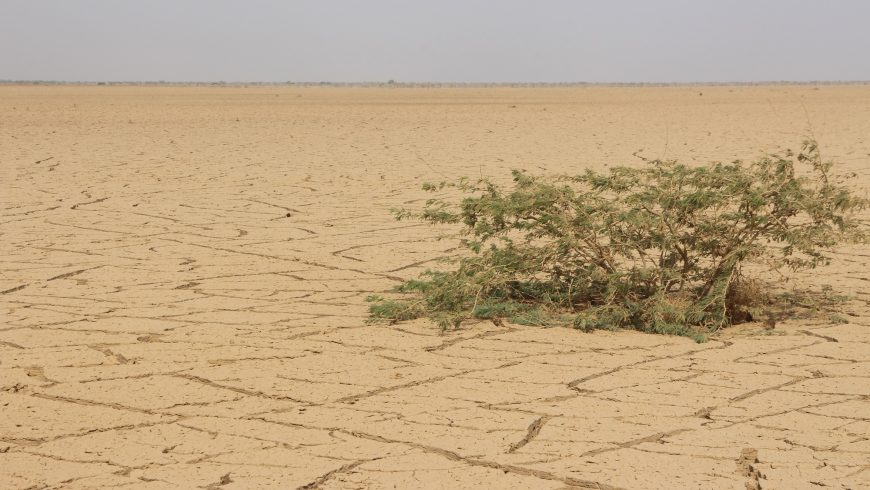The situation may worsen due to prospects of an unprecedented fifth poor season between October and December
The following statement is a joint alert issued by 14 meteorological agencies and humanitarian partners, including the Famine Early Warning Systems Network (FEWS Net), the World Food Programme, World Meteorological Association, Columbia Climate School, the UK Meteorological Office (Met Office), UN OCHA, UNICEF, UNHCR, IGAD Climate Prediction Centre, Mercy Corps and Islamic Relief .
30 May, 2022
The current extreme, widespread, and persistent multi-season drought affecting Somalia, the arid and semi-arid lands of Kenya, and Ethiopia’s Belg-receiving and eastern and southern pastoral areas, is unprecedented.
Four consecutive rainy seasons have failed, a climatic event not seen in at least 40 years. The latest long-lead seasonal forecasts, supported by a broad consensus from meteorological experts, indicate that there is now a concrete risk that the October-December (OND) rainy season could also fail. Should these forecasts materialize, the already severe humanitarian emergency in the region would further deepen.
The 2022 March-May rainy season appears likely to be the driest on record, devastating livelihoods and driving sharp increases in food, water, and nutrition insecurity. An estimated 3.6 million livestock have died in Kenya (1.5 million) and Ethiopia (2.1 million). In the worst-affected areas of Somalia, FEWS NET/FSNAU estimate that 1-out-of-3 livestock have perished since mid-2021. Over a million people have been displaced in Somalia and southern Ethiopia.
Existing water deficits have been exacerbated by very high air temperatures, which are forecast to continue into the June-September dry season. Rangeland conditions will deteriorate faster than usual, driving additional, widespread livestock deaths, as well as population displacements. In cropping areas, harvests will again be well below average, causing a prolonged dependency on markets, where households will have limited food access due to high food prices.
The Food Security and Nutrition Working Group (FSNWG) estimates that 16.7 million people currently face high acute food insecurity (IPC Phase 3+) and projects figures to increase to 20 million people by September. In Somalia, April 2022 analyses found a Risk of Famine (IPC Phase 5) and indicated that over 80,000 people were experiencing extreme hunger, indicative of Catastrophe (IPC Phase 5). In Kenya and Somalia, nearly 2.5 million people face Emergency (IPC Phase 4). Both Emergency and Catastrophe are associated with increased mortality. Ethiopia, Somalia, and Kenya have also recorded a significantly higher number of severely malnourished children admitted for treatment in the first quarter of 2022 compared to past years. In addition to the drought, food insecurity and acute malnutrition have been exacerbated by other concurrent shocks, including conflict/insecurity, rising global fuel, food, and fertilizer prices due to the Ukraine crisis, macroeconomic challenges, and the COVID-19 pandemic.
The predicted below-average October-December (OND) season would drive a deterioration of an already dire food security and malnutrition situation in 2023. However, irrespective of rainfall between October and December, conditions will not recover quick enough to see food security improvements before mid-2023. A rapid scaling up of actions is needed now to save lives and avert starvation and death. However, current appeals to respond to the drought remain well underfunded. The drought response needs to be increased immediately to prevent the already severe food emergency, including a Risk of Famine in Somalia, from deteriorating into an even more dire situation.
Notes
Most drought-affected areas have two rainy seasons per year (March to May; October to December) and are dry between June and September. The GHACOF 61 forecast, which indicates above-average June to September rains, are relevant to rains in South Sudan, Sudan, Uganda, western Kenya, Eritrea, Djibouti, northern Somalia, and western Ethiopia, but will not affect most drought-affected areas of the Horn.
Concurrent La Niña and negative Indian Ocean Dipole (IOD) conditions markedly increase the odds for below-normal rainfall, based on historical observations. The outlook for strong negative IOD conditions is supported by a high-level of agreement from long-range model forecasts. Monitoring of ocean-atmosphere conditions and important increases in model forecast skill should improve OND rainfall forecasts during the next several months (e.g., by July). However, experts agree that currently available model forecasts for large-scale Pacific and Indian Ocean conditions and precipitation impacts, strongly support concerns for below-normal OND 2022 rainfall.
